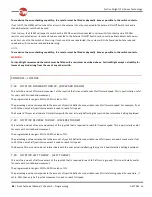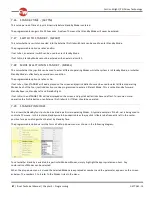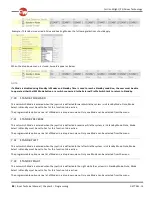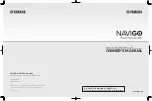
Curtiss-Wright | PG Drives Technology
SK77981-14
96 | R-net Technical Manual | Chapter 3 – Programming
electrical characteristics of the actuator motor being driven. Therefore, if currents of greater than 12A are required, the s peed
settings should be gradually reduced until reliable actuator movement is attained.
Programmable range is 1A to 15A in steps of 0.1A.
This parameter can be important if automatic endstop detection is employed. Automatic endstopping relies on the actuator
mechanism being held against a firm mechanical stop at the end of travel. However, some mechanisms may distort over time
due to the high endstop force. This force can be effectively reduced by reducing the value of this parameter.
NOTE:
The value must not be set so low that it cannot move the maximum rated load for the actuator mechanism, or does not
account for wear and increased friction in the mechanism.
9.9
DOWN CURRENT LIMIT
This sets the maximum current output for a particular ISM channel in the Down direction.
Down is defined as pin 1 positive with respect to pin 2 when the joystick is displaced in reverse and Invert Axis Direction i s not
set.
The maximum current the ISM can deliver is 15A. However, this can only be achieved if the channel’s Down Speed is less than
100%. At a setting of 100% speed, the maximum current is 12A. The actual speed setting that is required is dependent on the
electrical characteristics of the actuator motor being driven. Therefore, if currents of greater than 12A are required, the speed
settings should be gradually reduced until reliable actuator movement is attained.
Programmable range is 1A to 15A in steps of 0.1A.
This parameter can be important if automatic endstop detection is employed. Automatic endstopping relies on the actuator
mechanism being held against a firm mechanical stop at the end of travel. However, some mechanisms may distort over time
due to the high endstop force. This force ca n be effectively reduced by reducing the value of this parameter.
NOTE:
The value must not be set so low that it cannot move the maximum rated load for the actuator mechanism, or does not
account for wear and increased friction in the mechanism.
9.10
ENDSTOP AUTODETECT
This enables or disables the automatic endstop function for a particular actuator channel. Automatic endstop detection is a
technique that uses actuator motor current to detect if an endstop has been reached. Upon detection, drive to the actuator
motor is automatically cut. This technique removes the need for micro-switches at end limits.
The programmable options are Yes and No.
NOTE:
Automatic endstop can only be used with actuator Acceleration and Deceleration values of 100%.
Automatic endstop may not work well if the actuator takes a very low current.
















































